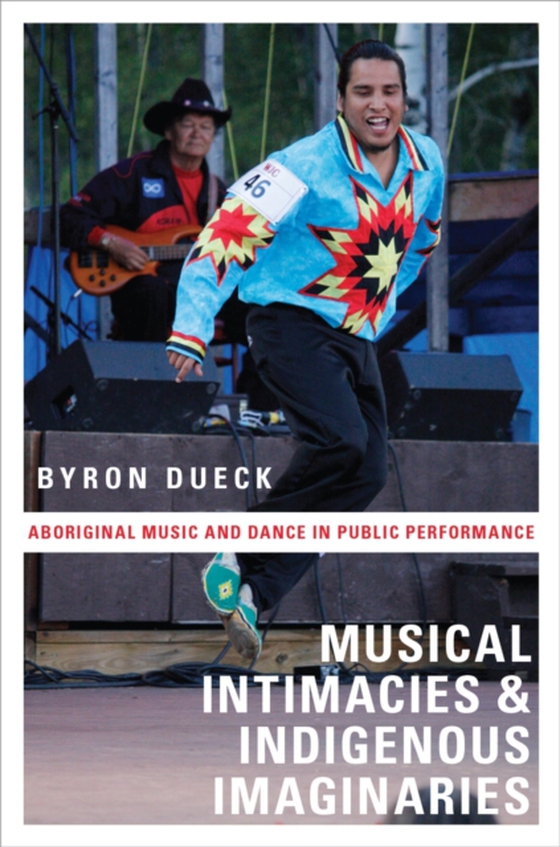
Musical Intimacies and Indigenous Imaginaries e-bog
245,52 DKK
(inkl. moms 306,90 DKK)
Musical Intimacies and Indigenous Imaginaries explores several styles performed in the vital aboriginal musical scene in the western Canadian province of Manitoba, focusing on fiddling, country music, Christian hymnody, and step dancing. In considering these genres and the contexts in which they are performed, author Byron Dueck outlines a compelling theory of musical publics, examines the comp...
E-bog
245,52 DKK
Forlag
Oxford University Press
Udgivet
25 oktober 2013
Genrer
1KBCM
Sprog
English
Format
pdf
Beskyttelse
LCP
ISBN
9780199876914
Musical Intimacies and Indigenous Imaginaries explores several styles performed in the vital aboriginal musical scene in the western Canadian province of Manitoba, focusing on fiddling, country music, Christian hymnody, and step dancing. In considering these genres and the contexts in which they are performed, author Byron Dueck outlines a compelling theory of musical publics, examines the complex, overlapping social orientations of contemporary musicians, and shows how music and dance play a central role in a distinctive indigenous public culture. Dueck considers a wide range of contemporary aboriginal performances and venues--urban and rural, secular and sacred, large and small. Such gatherings create opportunities for the expression of distinctive modes of northern Algonquian sociability and for the creative extension of indigenous publicness. In examining these interstitial sites--at once places of intimate interaction and spaces oriented to imagined audiences--this volume considers how Manitoban aboriginal musicians engage with audiences both immediate and unknown; how they negotiate the possibilities mass mediation affords; and how, in doing so, they extend and elaborate indigenous sociability. Musical Intimacies brings theories of public culture from anthropology and literary criticism into musicological and ethnomusicological discussions while introducing productive new ways of understanding North American indigenous engagement with mass mediation. It is a unique work that will appeal to students and scholars of popular music, musicology, music theory, anthropology, sociology, and cultural studies. It will be necessary reading for students of American ethnomusicology, First Nations and Native American studies, and Canadian music studies.
 Dansk
Dansk

